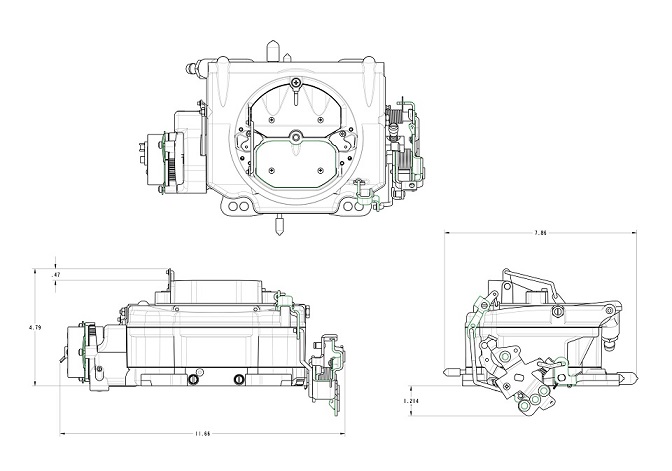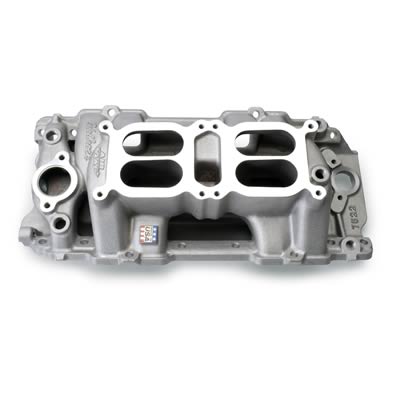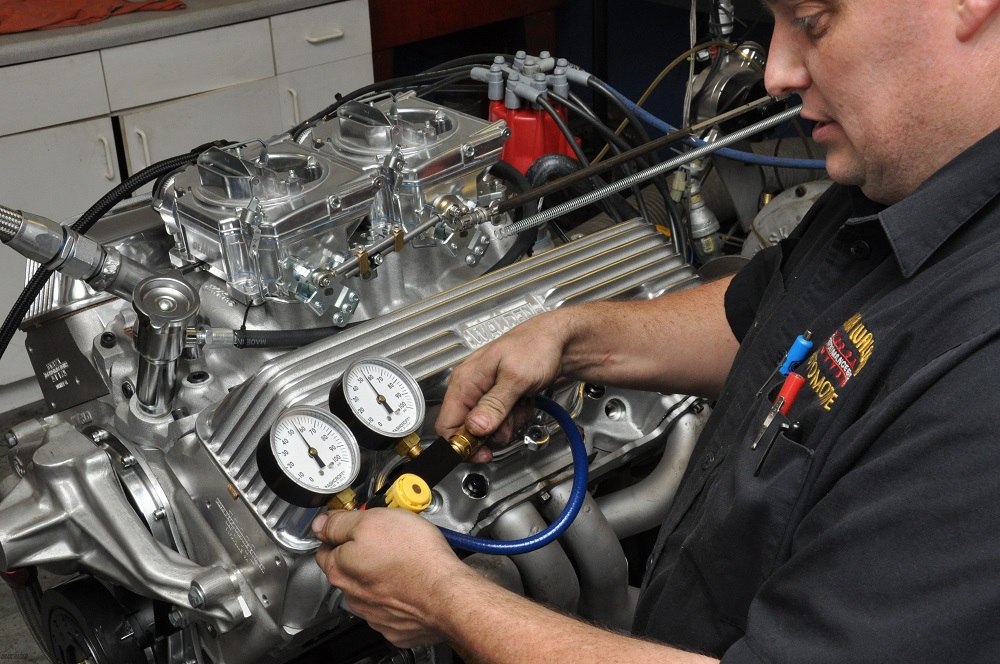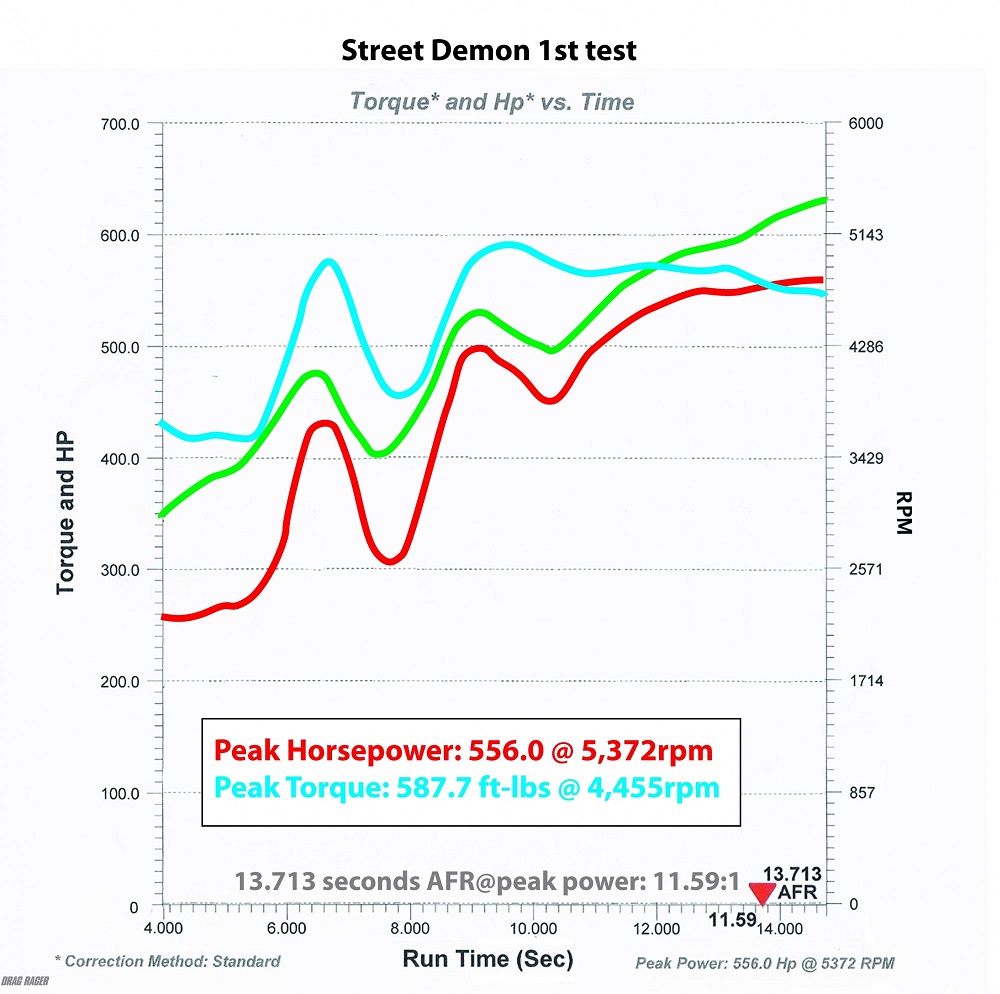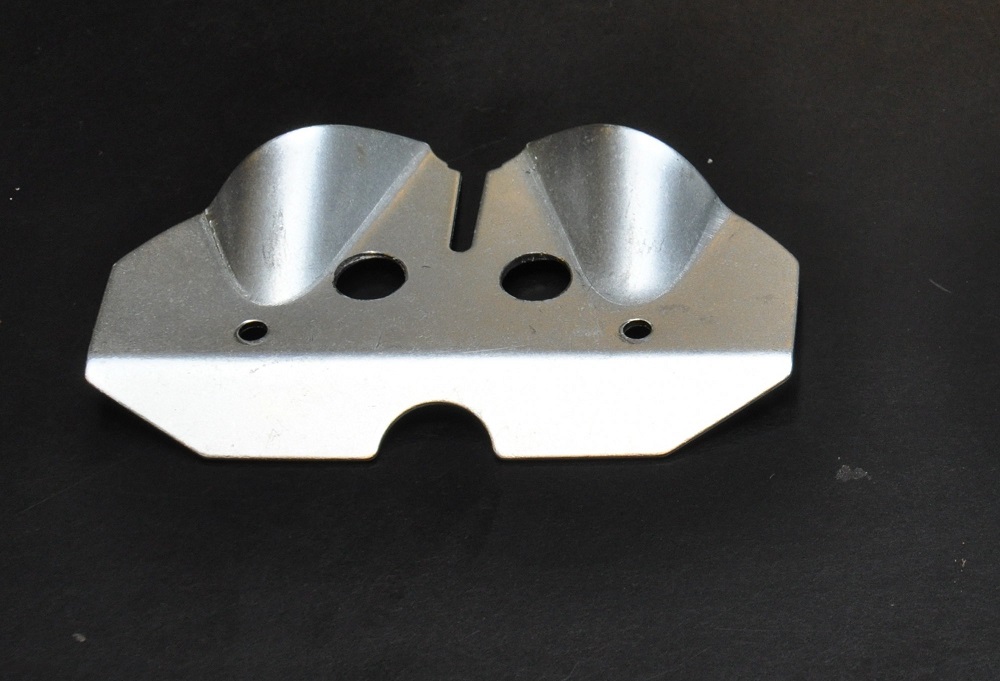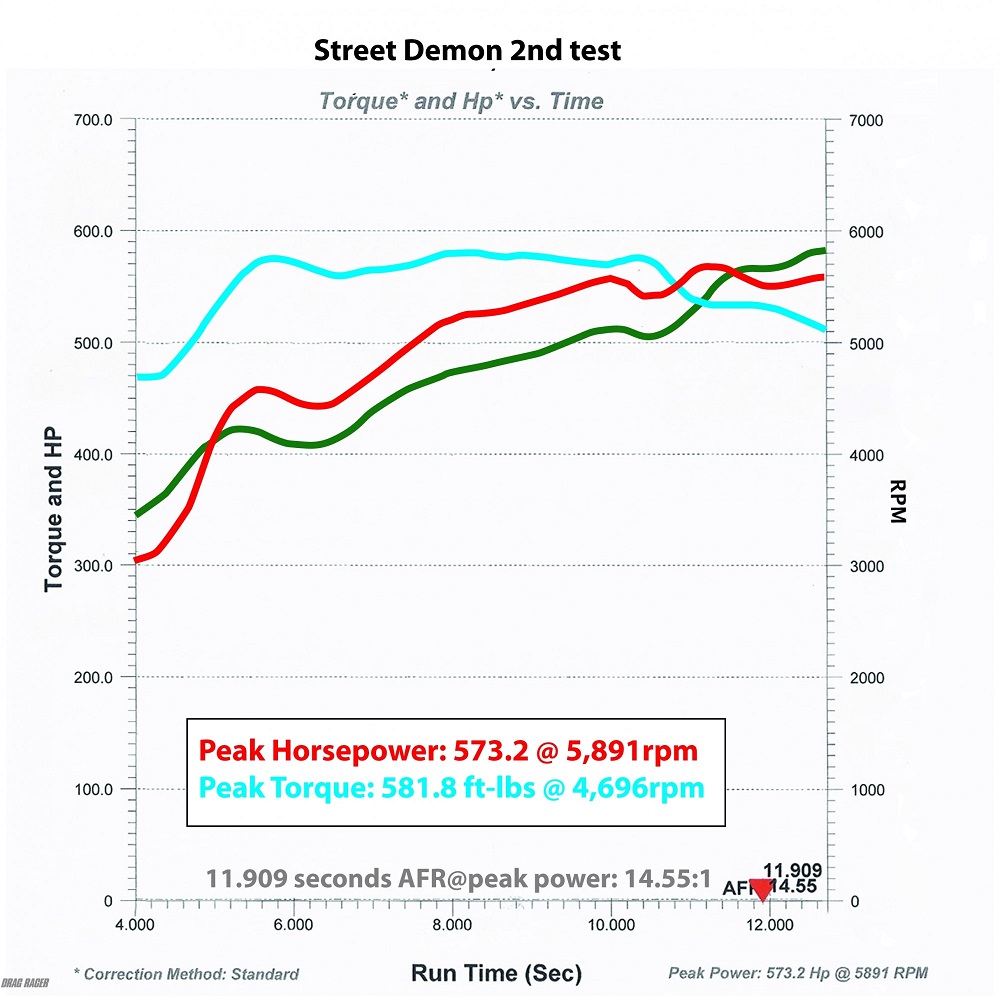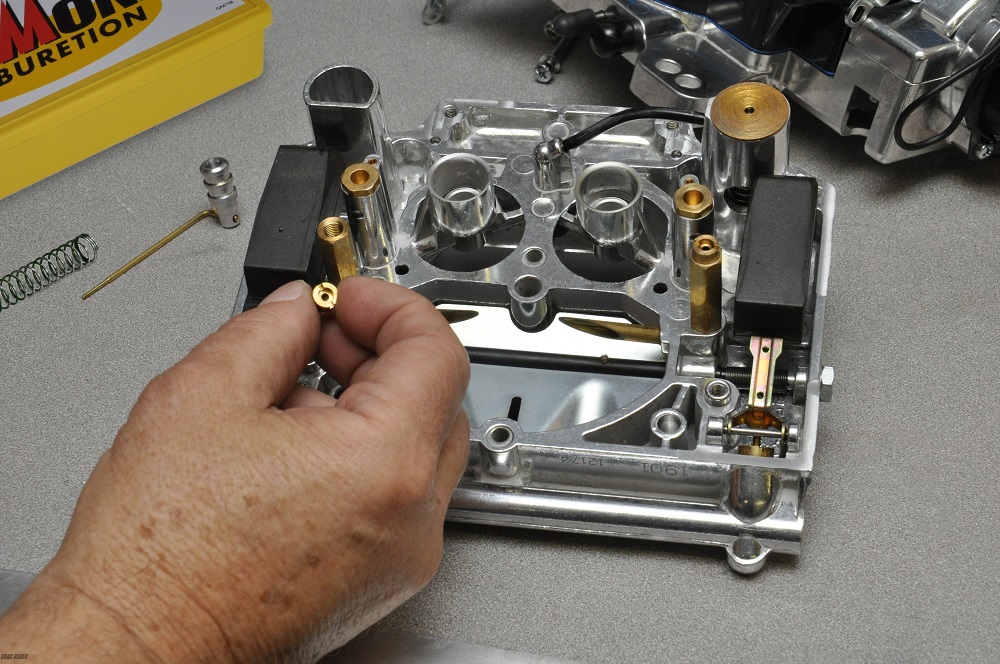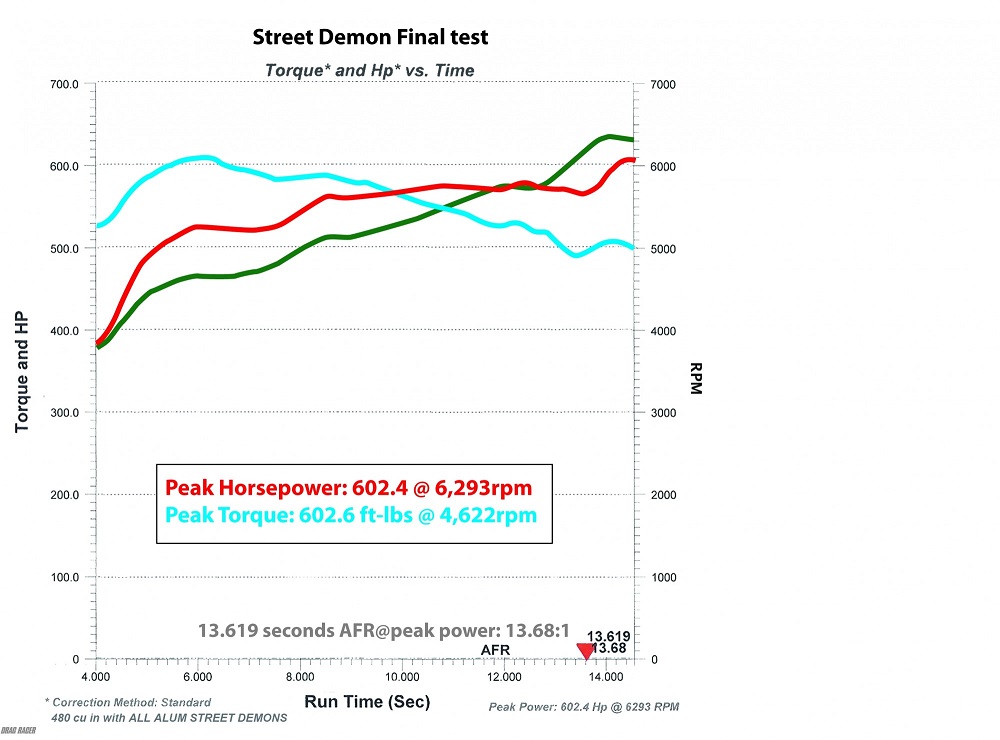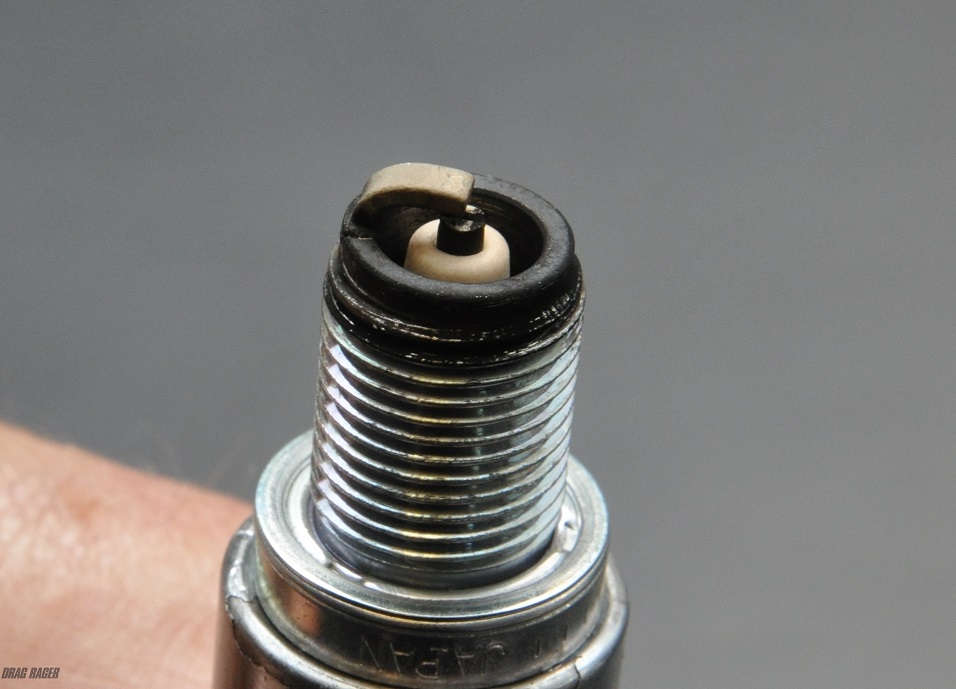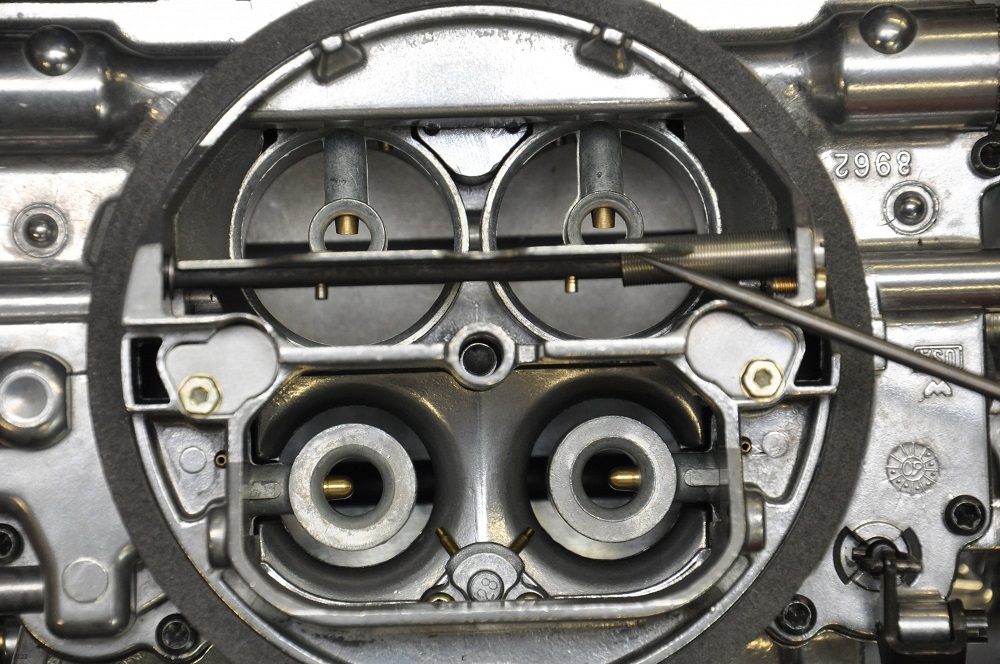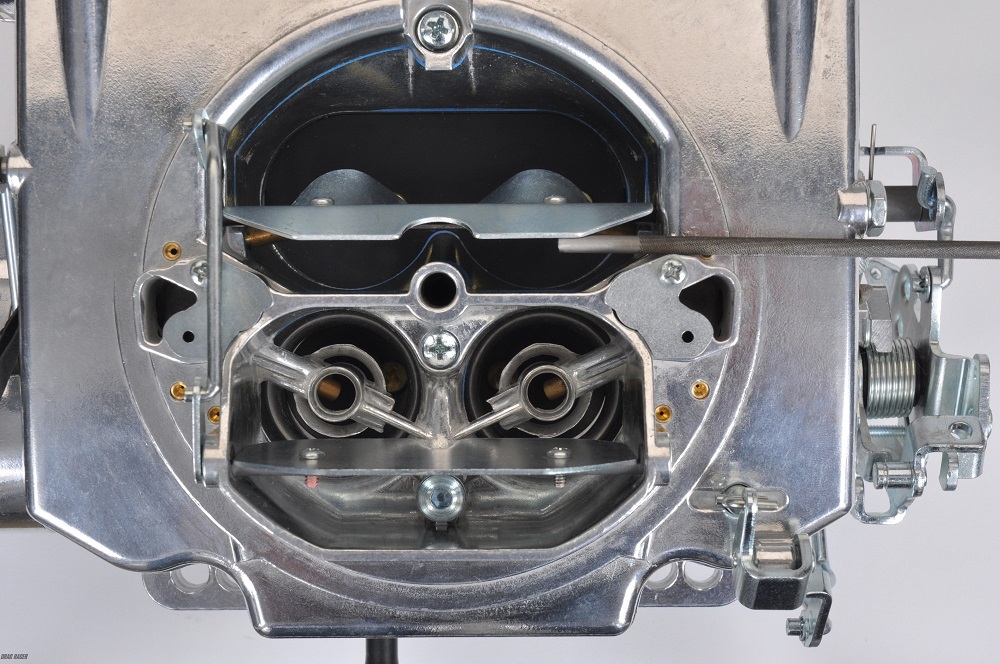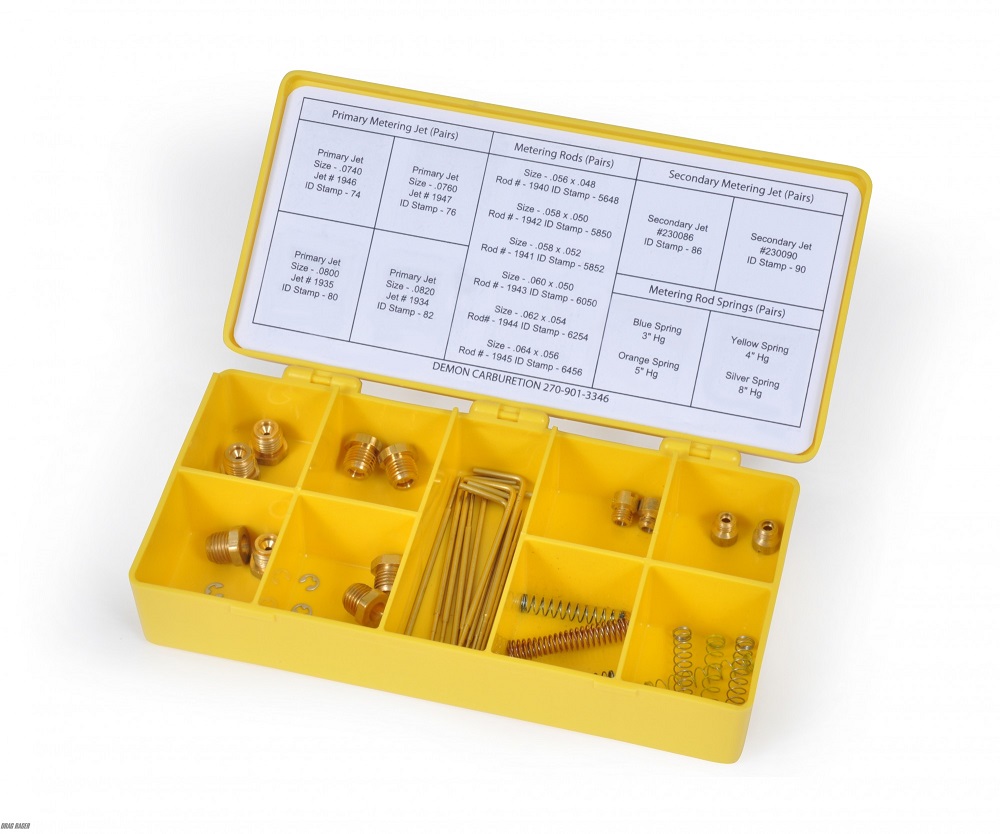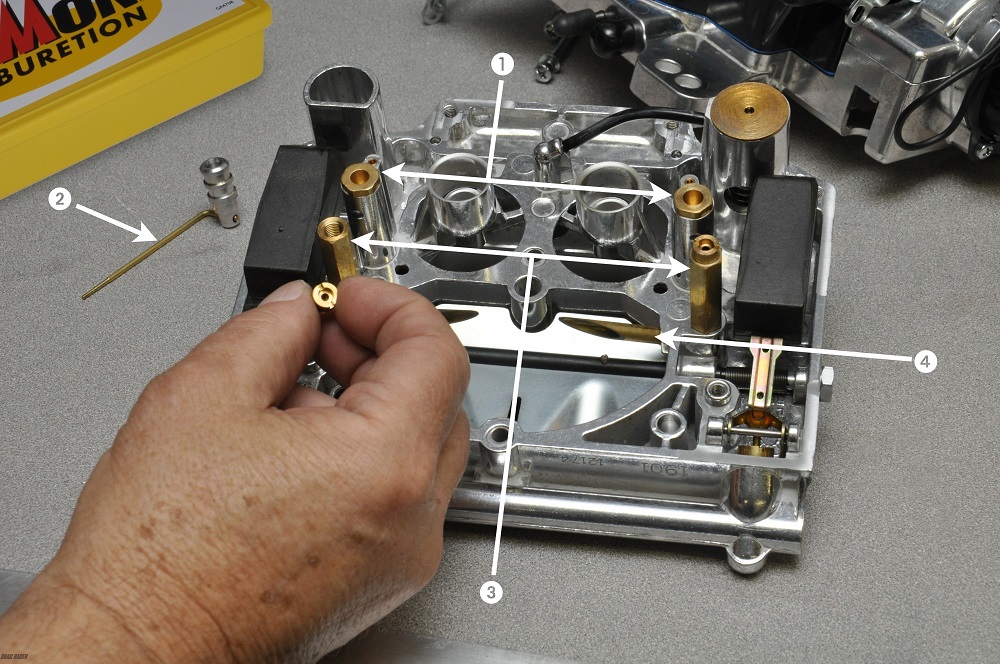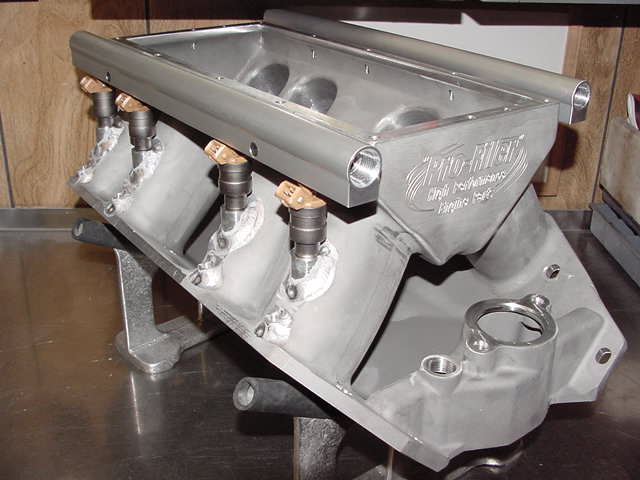http://www.dragracermag.com/twin-street-demons-and-lamar-waldens-new-409-a-devilishly-delicious-duo
http://garage.grumpysperformance.com/index.php?threads/dual-quad.11867/#post-56263
In the dyno room, Lamar Walden’s first production road-going 409 fit with twin 625 Street Demon carburetors revved with enthusiasm to 6,293 rpm and generated 602.4 peak horsepower and 602 lbs-ft torque at 4,600 rpm. For some the emergence of the new Street Demon and the reemergence of a new 409 have been the biggest news in hot rodding in quite some time.
Earlier in a comparison test twin Edelbrock AVS carburetors had generated a commendable 553 hp at 5,800 rpm and 575 lbs-ft torque at 4,470 rpm. Why had the Street Demons triumphed by 49 hp and 27 lbs-ft of torque? “I imagine,” said Lamar, “its supremacy lies in the size of its secondary throttles.” Unlike any conventional four-barrel layout, the Street Demon is a three-barrel carburetor inhibited by few restrictions: The secondary throttle bore is one big opening.
It’s taken Demon a while to compose a convincing answer to the Edelbrock AVS. But once Larry Tipton, Demon’s distinguished senior designer, focused his creative energy on the new carburetor design in 2010, we suspected a beacon of carburetor ingenuity could be in the works. And when it appeared on May 25, 2012, it not only looked the part in a market where appearance is of primary concern, but it also proved to be a very strong performer.
Based entirely on a brand-new concept this innovative three-barrel 625 Street Demon has noticeably smooth contours especially around the air entries, unlike its Edelbrock counterpart. Though both carburetors have dual mounting points, accommodating square-bore or spread-bore manifold mounting without adapters, Tipton is particularly pleased with the effectiveness of his triple-stack boost venturii arrangement. Set in compact 1 3/8-inch primary throttle bores, selected to induce fast-moving airflow, “This layout,” he says, “delivers superior air-fuel emulsification, and as a result, the acceleration will be crisp. The fuel economy for street performance will also be heartening.” But for this first test of Lamar’s new LWA 409 high-performance hot engine,
two Street Demons set in tandem were stipulated. To date, twin Street Demons have never been run before.
Though these 409 blocks display the same outward appearance as the original Impalas of the ‘60s and the cylinder heads and valve covers exhibit the same alluring “W” shape, the internal power-making capacity is entirely modern. Since this was the first occasion that twin Street Demons would be used in tandem, we were enthralled by the challenge. “Come on down to Doraville,” was Lamar’s cry, “and let’s make some noise!” Lamar, a warm, congenial man with 50 years of race-engine building experience, is currently receiving his first batch of 50 LWA 409 aluminum engine blocks, all of which, he reports, are sold.
This particular 409, which is endowed with a 4.375-inch bore and 4-inch stroke, for a displacement of 481 ci, is destined to power an Impala on the streets. It will run 93-octane pump fuel with 10:1 compression ratio. Though the engine’s 4-inch stroke permits ample time for cylinder filling, a hydraulic roller camshaft was selected with a lobe separation angle of 111 degrees (lobe centerline angle) because this Impala requires at least 10 inches of vacuum to run its power-assisted brakes and other accessories; hence, its longish stroke length and modest valve-open overlap maintains a comfortable reservoir of vacuum.
Finally, the engine is completed with LWA cylinder heads containing intake and exhaust valves of 2.250 inches and 1.740 inches respectively, valve lift of .650 inch and .680 inch, and an Edelbrock intake manifold. The Edelbrock is similar in design to the original. Though taller in dimension, LWA has a higher performance alternative.
Set in tandem on top of the first production LWA409, we were interested in not only the tuning procedures needed to get the two Street Demon carburetors to produce their optimum power, but we also wanted to know how they’d compare against the established Edelbrock AVS models.
So here we are: This is a tale of a test of the first twin 625 Street Demon carburetors on the first new 409 hot rod engine. Clearly these carburetors fared pretty well, and there is reason to think the future is bright for this gutsy decision, a decision to create a brand-new carburetor in 2010 that became a reality in 2012! Who’d have thought it? Here in this sequence of photographs and captions is how the engine tests unfolded.
Demon Carburetion270.901.3346
Demoncarbs.com
Lamar Walden Automotive770.449.0315
Lamarwaldenautomotive.com
Following a couple of initial dynamometer pulls to bed-in valves and rings, leak-down tests were conducted on every cylinder. On a race motor the aim is to contain pressure leaks to less than 10%. With 150 psi of compressed air introduced to the combustion chambers, this road-going 409 motor averaged a negligible 2%
At five-nine seconds into the first dyno test, the graph reflected an acute shortage of air. These violent waves represent severe hesitation, easily corrected by tuning wizard Lamar Walden and a Demon tuning kit.
To encourage the secondary throttles to engage earlier, tension was reduced on its upper flap valve. Though the next dyno pull revealed an improvement, Lamar concluded that access to an additional air supply would be required
To introduce further air to the secondary throttles two holes 21/64th in diameter were drilled in the upper flap valves.
With sufficient air traveling through the secondary throttles, the next dyno graph showed a marked improvement. The hesitation that had occurred between five and nine seconds into the pull had vanished and power output had increased by 17 hp. Now it’s time to tune the air-fuel ratios
For jet changing, the eight Phillips-head screws were undone and the Street Demon was dismantled. For part-throttle tuning it’s even more convenient. Simply undo two Phillips-head screws on the top of the carburetor to access the primary metering rods and attendant enrichment springs.
On the final dyno-pull evaluation, the twin Street Demons had increased the 409’s street potential by 46 hp and established favorable air-fuel ratios in the mid-13s. The graph shows an impressive 602 hp at 6,293rpm and 602 ft-lbs torque at 4,622 rpm.
To confirm the dyno air-fuel ratios, spark plugs were removed. Though the heat mark on the ground strap is not clearly visible in this photo, the color change is almost midway, suggesting correct ignition timing. The porcelain also reveals healthy color, and there is no evidence of soot deposits on the base ring, which indicates correct jetting. LWA aims for one to two blackened threads on a street engine; on a race motor that generates more heat, they aim for two to three blackened threads and a slightly lighter color on the base ring.
The dyno graph with the twin 625 AVS carburetors showed a little less horsepower and torque than the Street Demon’s.
The 625 Edelbrock AVS is a conventional four-barrel layout.
In contrast, the Street Demon’s unorthodox three-barrel layout, with its large secondary goggle valve and carefully rounded air entries, showed the measure of this carburetor’s potential to produce power.
http://www.summitracing.com/parts/dem-1921
Larry Tipton, senior Demon designer, went all out to give the new Street Demon a clean look and a useful purpose. Equipped with 1 3/8-inch primaries with triple-stack boosters and secondary throttles more than twice the size of the primaries, he also ensured it would easily replace any street four-barrel, either square bore or spread bore.
http://www.summitracing.com/parts/dem-1921
“The Street Demons,” he says, “have great looks and they’re easy to work on and simple to tune.”
This calibration kit allows you to tune the air-fuel ratios for a specific engine. Air-fuel ratios are often affected by engines with high compression and camshafts beyond standard street motor tune and sometimes intake manifolds with distribution issues at various rpm. Under these circumstances having access to the calibration kit is a big advantage.
With access to a Street Demon calibration kit, the fuel metering circuits can be easily tuned.
Arrow 1 shows the primary jets attached to the ends of the primary towers. The small circular brass components just visible above these jets are idle fuel restrictors installed in the ends of the idle fuel metering passages of the primary circuits.
Arrow 2 shows a two-step metering rod. One of two, these rods reside inside the primary towers. Each is attached to an aluminum piston and is pulled downward into the primary jets when vacuum is high at idle and part throttle. As the engine vacuum fades, the springs under the pistons lift the two-step metering rods, allowing the smaller step diameters to meter more fuel through the primary jets. The point at which they rise can occur sooner or later in the throttle opening, based upon the spring load selection offered in the calibration kit.
Arrow 3 shows the brass hex extensions on which the secondary jets are attached. Inside each extension is an emulsion tube, which emulsifies the fuel in the secondary circuits.
Arrow 4 shows two horizontal brass nozzles with oval exit profiles from which the secondary air-fuel mixture is dispersed.
Text by Sam Logan and Photos by Moore Good Ink
IF you want max performance youll need decent hood clearance,and direct port EFI, to allow intake runners with a direct path from throttle body to intake valve in a strait line

